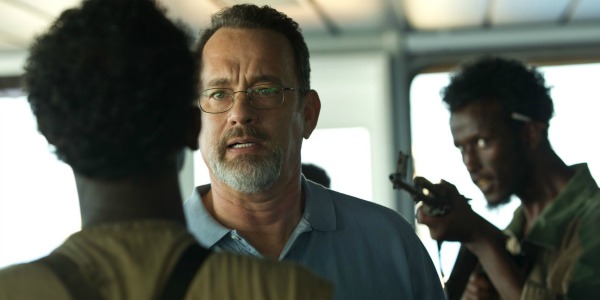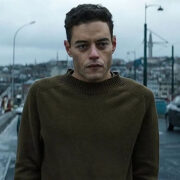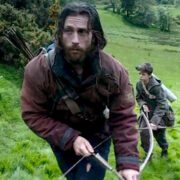What Is Film Analysis? Part 2: Production, Visuals & Direction

I love film, more than people probably, and I will…
This is the second and final part of our What Is Film Analysis article. Find the first part, on Narrative and Character, here.
Production
The giveaway of any bad production is the settings and costumes. Since the beginnings of contemporary independent film making in the 90’s money can no longer be used as an excuse, and now you’ll find that even the smallest budget can yield a high quality production. Filmmakers are very savvy and have learnt to work with what they’ve got. Well, the good ones have, anyway (read Robert Rodriguez’s “Rebel Without A Crew” for more on this). Sometimes a sterling script can pull back a poor production, but more than often a poor script and a low quality production go hand in hand. Even here, though, it is important to be sympathetic to the challenges of filmmaking, and what the production has or hasn’t done to overcome them.
The first thing you’ll notice when analysing the standard of production is the scenery. Is the director using one location too much? Has the production obviously just been shooting at someone’s house except for the one twenty minute long sequence that sees the characters at a music festival? This kind of filming can make the world of the film seem odd or uneven. There will be cases when the camera shots are unreasonably tight or incongruous with the rest of the film. Most likely the director is trying to cut out something inopportune in the back of shot. This will feel uncomfortable from a viewing perspective, and is most often a mistake made in period films.

Films set over a hundred years ago have to have a large budget, and inevitably a high standard of production, there is just no way of getting around it. That is, unless the film limits the location of its story (ref: Deathwatch). However, films set in the last sixty years, who cannot obtain a good level of production funding, often find themselves falling into the trap of making do with what they have. And in a lot of cases, this can backfire (ref: Electric Slide). The characters’ clothes look like they’ve been bought from a vintage shop and the actors sport contemporary hair styles. Plus, the production will often use ‘period looking’ locations. Meaning the old shopping malls and unfashionable cafes that you can find in any town. This kind of filmmaking will not help at all in engaging you with the era, look out for it.
Casting
Casting also falls under the heading of production. In modern cinema reviews people all too quickly address the star quality of the actors on screen, I mean, who wouldn’t? For a lot of the time they are the reason an audience is drawn to a film. But here we are analysing a film, so it’s important to remain objective and focussed. Are they the right actor for this character? Are they playing up to their type or trying to get away from it? Most importantly, how is their acting?
This is probably the greatest skill you can ever learn; how to tell good acting from bad. A lot of it comes down to two attributes. Firstly, does it sound like the actor/character’s dialogue is coming from them, or does it sound like they are simply regurgitating lines? It’s not as fine a line as you would think, it’s the difference between someone telling you the truth or a lie. Secondly, does it sound like they are taking direction verbatim? For instance, does it look like they’re following the command to stand, walk into that room etc. When this is happening it becomes quite obvious, as they look like they’ve practised the movement beforehand (which, of course, they have. But we shouldn’t know that).

Acting is complex and I can’t even begin to go into all the marks you should be watching out for. However, there is one key that I always set store by, which is the look in the actor’s eyes. Regardless of what they are doing in the scene an actor should look like they are engaging. Tom Hanks is the master of this kind of acting (ref: Captain Phillips). He is always involved, always considering what’s going on. Which means that when he does yell, or cry, it feels as though it originates from him, and not from the instructions of a script or a director. If you want to compare and contrast I can recommend watching Jim Sturges, whose lack of subtlety will mean it always looks like he’s acting, instead of simply being.
Visuals
Of course, what sets film apart from most other mediums is its visual nature. The cinematography is key in how a film looks. So think about how shots have been framed and lit. Does it look right? Is it oddly light out for the middle of the night? Is something missing from the scene? The reaction of another character perhaps? The influences of the cinematographer and director can also be found here: their artistic backgrounds, but also their own tastes and schools of thought.
What are you looking at? What can it tell you about the filmmakers’ influences? Is this American (Hollywood) or European cinematography? American cinematography will give the audience exactly what they need to see, and is prevalent in modern action films, also overwhelmingly in classic Hollywood cinema (ref: Casablanca). European on the other hand shows the audience exactly what the director wants them to see. This is usually noticeable by its extravagant framing, which allows the actors to move around in the shot (ref: L’Avventura). This, however, has also influenced Hollywood filming (the work of Wes Anderson being a prime example).
Rather practically, you can also ask what the film has been recorded on. Is this film or digital? What has it been filmed with? Is this your standard camera, or is a steadicam used? How has that added or detracted from the narrative? (ref: The Revenant). Furthermore, what has been done to enhance the visuals or even harm them? Are the special effects poor? Has something been done to the film to cover up mistakes in filming? (ref: day masquerading as night in Two Faces Of January).
Usually the greatest clue to whether anything has been done to the finished film, good or bad, is whether you can see it. If you never notice it, the filmmakers have done a good job. The list of elements involved in the visual analysis of films falls under the heading of mise-en-scène, which will be covered in another article, and is as long as any book. The key thing to remember is how the film looks to you and how it feels. If it feels wrong, ask why.
Editing
Now, to editing. Like cinematography there are two general types. American editing will, like its cinematography, give the audience exactly what it needs to see. This can be quite choppy, but has the benefit of drawing the audience in as they stay tight to the story. European editing, on the other hand, can be quite languid and non-distinct. Shots can last for minutes at a time, going on beyond the actor’s lines.
This can be problematic, as it can sometimes give the impression of slowing up the story (ref: À Bout De Souffle). They say that films are made in the editing room, so what the director and editor have chosen to cut and chosen to show the audience here is very important. Think about the visual flow, and how it affects the narrative. What is missing? (Lost In Translation is an excellent example of how editing can fix the narrative flow, unfortunately continuity errors give it away.)
Sound
Sound is overlooked a lot in film analysis. Maybe because it’s a very technical thing and if it does go wrong, it can be fixed. When it isn’t fixed, or fixed badly, it can be obvious. Bad mixing means that music drowns out dialogue, or perhaps dialogue cannot be heard at all. Sometimes the music is just too loud, or perhaps the ADR (additional dialogue recording, audio recorded in post-production to fix errors in sound recording) is too noticeable. Bad ADR will usually sound like the actor has gone from standing in the room, to standing right next to the microphone. (I’m Still Here occasionally gives away its fictional narrative form with rather obvious ADR.)

With quality sound recording and mixing, a list of tracks: the dialogue, additional ambient sound, sound effects, Foley effects, and music etc. should all dovetail perfectly into one another. In bad cases you can end up with anything from a lack of ambient atmosphere (ref: Electric Slide) to too much (ref: Public Enemies). The difference between the good and the bad can mean a lot to the final film and how you experience it.
In film you have diegetic and non-diegetic sound, diegetic sound comes from within the diegesis (the narrative), the non-diegetic from outside. Anything that comes from within the narrative should sound like it does, badly mixed ADR, or unusually loud music supposedly emanating from a radio, is intrusive and can affect the atmosphere of the film. On the other hand, truly perfect sound recording and mixing is imperceptible, and a good film can make you hear invisible crowds (ref: La Règle De Jeu) or create an emotional silence in which to drop a pin. Listen out for these changes.
Direction
The choices of the director, and even the actual job of a director, is I think probably the most overlooked element in film watching and film analysis. People don’t seem to know why it’s important. I hope I’m not being overly poetic when I say that a director is much like a orchestra conductor. All the parts are there but the director is the one who has to bring them all together, time them right, and make the story work. Although unlike a conductor the director’s choices are more creative and their ultimate decisions across all aspects of a film can affect its look and sound. Most importantly, the work of a director can be seen in the performances of the actors and how their performances are filmed.
Bad direction, or bad choices, are mainly seen in the speech and movement of the actors. It is the director’s job to make sure they hit those emotional beats, or lengthen silences, to move frenetically, or to fall apart. The script will have pieces of direction and the actor will imagine for themselves what their character will do, but it is the director who works out what is needed, how the performance works in the context of the scene, and how each of the actor’s performances should dovetail into one another. Bad direction will mean static scenes, allowing the actor to ‘ham up’ their performance or even making the wrong choice during editing. Although, bad directing is usually a lot more subtle than this, and when it’s wrong you will feel it more than see it.
In the cases of great direction an auteur style will shine through. Such is the case with Tim Burton’s gothic imagery, or Alfred Hitchc*ck’s suspense. This will play a lot into how the film looks or feels, but it doesn’t always necessarily mean that the director has got the best from the script or performance. Take Hitchc*ck’s screaming blondes, for example, he may have been the master of suspense but how effectively did he direct people?
Film History & Culture
One of the last, but always important, factors when analysing a film is its place in history and culture. Every single film is influenced by something that came before it. That is not to say that all films are derivative, but they are part of a larger world of cinema. What about a film reminds you of something you once saw? Was it the cinematography? The soundtrack? The acting? The editing?
A great recent example of this is Adam Wingard’s The Guest, that happily homages the seventies horror style (ref: Halloween). However, this needn’t be so overt. Camera shots, character interactions, scenarios, can all pay homage to, or be a legacy of an historical film or film style. As with story plots and formulas you need to ask where you have seen this before, and most importantly, what it adds to this film.

In modern day, more than ever, film production is surrounded by a cultural furore. This factors into the making of a film and the audience’s expectations of it. Everything from The Hunger Games to Carol is influenced by and can influence our contemporary culture. Talk about this. Why did it take so long to get The Dallas Buyers Club made? What does the making of Kingsman: The Secret Service say about our society? This is all important, and puts a measure on how important a film itself is to the audience and our social change.
Subjectivity and Writing Film Reviews
All that I have talked about in this essay is about objectivity. I would say that there are people who differentiate between academic film writing and entertaining film reviews, I’m not really on board with that. While I believe a review has a lot more to do with whether a film was entertaining or not, I still think a great deal of objective film analysis should take place. Otherwise you end up with a lot of critics only handing out good reviews to what they particularly like. And that’s not exactly fair.
A good review should be one that unpacks a film, and fairly explains what is good and bad about it. The key word here is ‘fairly’. You should be methodical and offer evidence for your arguments. However, the writing should also have personality and humour. While your subjectivity is not the most important thing here, it is nevertheless an important factor in your experience of a film. And, after all, we’re only human, and it’s ultimately the personal approach of the writing that will appeal to the reader.
So, What Is Film Analysis?
Film analysis is, unsurprisingly, about analysing films. It is about looking at and analysing every single facet of a film, asking why it is a good or bad, then backing up your argument with evidence. It is about looking into and around a film. A film is never just a film, its depth is always greater than you think and its history is older than you can imagine. It’s important to give a film its dues, no film deserves to be trashed just because you ‘didn’t like it’ or because ‘it wasn’t your sort of thing’. And while I can’t stop you from being you, here are some final words of advice, should you wish to take them.
You’re analysing a film, you don’t have to tell your reader the story. They can get that anywhere, your job is to deliver good arguments for what in the film does or doesn’t work. Whether you’re writing a review or not, it’s not about you. Some subjectivity is important but you are not up for analysis, the film is. Also, stick to the point, this is methodical analysis, not prose. Explain yourself and make yourself heard.
One final note. This may all seem over the top or prescriptive. However, these are films, which, if you are reading this, are probably very important to you. So give it a try, be particular, look further, inquire. It’s either this or end up being just another internet film critic attempting to shout your opinion over the already deafening roar.
[highlighted_p boxed=”false” center=”false”]Thoughts, questions, INQUIRIES? Share them below.Does content like this matter to you?
Become a Member and support film journalism. Unlock access to all of Film Inquiry`s great articles. Join a community of like-minded readers who are passionate about cinema - get access to our private members Network, give back to independent filmmakers, and more.
I love film, more than people probably, and I will watch pretty much anything. Seriously, anything! I have a postgraduate education in film & have spent an exceptionally long time trying to get inside the film industry. I'm a big believer in treating every film the same, and bringing something new to the film theory table, giving reasons for every argument made. You'll find that I'm an empathetic and fun sort of reviewer, at least, I like to think so. If I'm not watching films I'm doing exceptionally nerdy stuff, like watching documentaries about the history of medicine and collecting photos of old post boxes.












